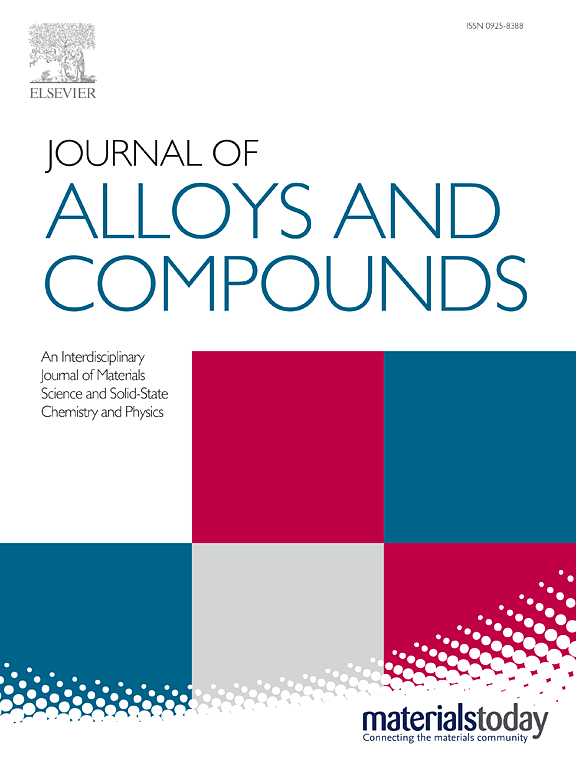拒液和隔热HGB/PDMS-CsPbBr3复合薄膜朝向高度优异的光学性能和稳定性
IF 5.8
2区 材料科学
Q2 CHEMISTRY, PHYSICAL
引用次数: 0
摘要
全无机钙钛矿量子点(QDs)由于具有量子效率高、带隙可调、半最大全宽窄等优点,在光电器件中引起了广泛的关注。然而,固有的晶格不稳定性明显阻碍了它们在各种极端环境中的应用。本文设计了一种新型的聚二甲基硅氧烷(PDMS)与CsPbBr3量子点的中空玻璃泡(HGB)相结合的拒液隔热复合薄膜。由于HGB有效地抑制了热应力引起的晶格畸变,HGB/PDMS-CsPbBr3复合薄膜在高温环境下具有很高的光学性能。制备的HGB/PDMS-CsPbBr3复合膜的水接触角(WCA)由62.4±6.5°增加到149.5±3.1°。经氢氧化钠溶液(NaOHaq)处理后,HGB/PDMS-CsPbBr3复合薄膜可以在30天的浸泡时间内保持其发光性能。此外,HGB/PDMS-CsPbBr3复合薄膜的光致发光量子产率(PLQY)高达84.9%,激光阈值较低,为0.03 mJ/cm2,表明该复合薄膜具有光学增益介质的潜力。这项工作有望为实现高稳定的CsPbBr3量子点提供一种有效的策略,在未来光电器件的应用中具有很大的前景。本文章由计算机程序翻译,如有差异,请以英文原文为准。

Liquid-repellent and thermal insulation HGB/PDMS-CsPbBr3 composite film towards highly great optical property and stability
All-inorganic perovskite quantum dots (QDs) have attracted considerable attention in optoelectronic devices due to their impressive advantages, including high quantum efficiency, tunable bandgap, and narrow full width at half maximum. However, the inherent lattice instability distinctly hinders their applications in various extreme environments. Herein, we designed a novel liquid-repellent and thermal insulation composite film by the combination of polydimethylsiloxane (PDMS) and hollow glass bubbles (HGB) with CsPbBr3 QDs. Due to HGB effectively suppressing the thermal stress-induced lattice distortion, the HGB/PDMS-CsPbBr3 composite film performed highly great optical property in a high-temperature environment. The water contact angle (WCA) measured on the prepared HGB/PDMS-CsPbBr3 composite film increased from 62.4±6.5° to 149.5±3.1°. Upon being subjected to sodium hydroxide solution (NaOHaq), the HGB/PDMS-CsPbBr3 composite film could retain its luminescent property for an impressive duration of 30-day immersion. In addition, the HGB/PDMS-CsPbBr3 composite film exhibited a higher photoluminescence quantum yield (PLQY) of 84.9% and the lower lasing threshold of 0.03 mJ/cm2, indicating a potential of optical gain medium for this composite film. This work is expected to provide an effective strategy to achieve highly stable CsPbBr3 QDs, holding great promise in the future applications of optoelectronic devices.
求助全文
通过发布文献求助,成功后即可免费获取论文全文。
去求助
来源期刊

Journal of Alloys and Compounds
工程技术-材料科学:综合
CiteScore
11.10
自引率
14.50%
发文量
5146
审稿时长
67 days
期刊介绍:
The Journal of Alloys and Compounds is intended to serve as an international medium for the publication of work on solid materials comprising compounds as well as alloys. Its great strength lies in the diversity of discipline which it encompasses, drawing together results from materials science, solid-state chemistry and physics.
 求助内容:
求助内容: 应助结果提醒方式:
应助结果提醒方式:


